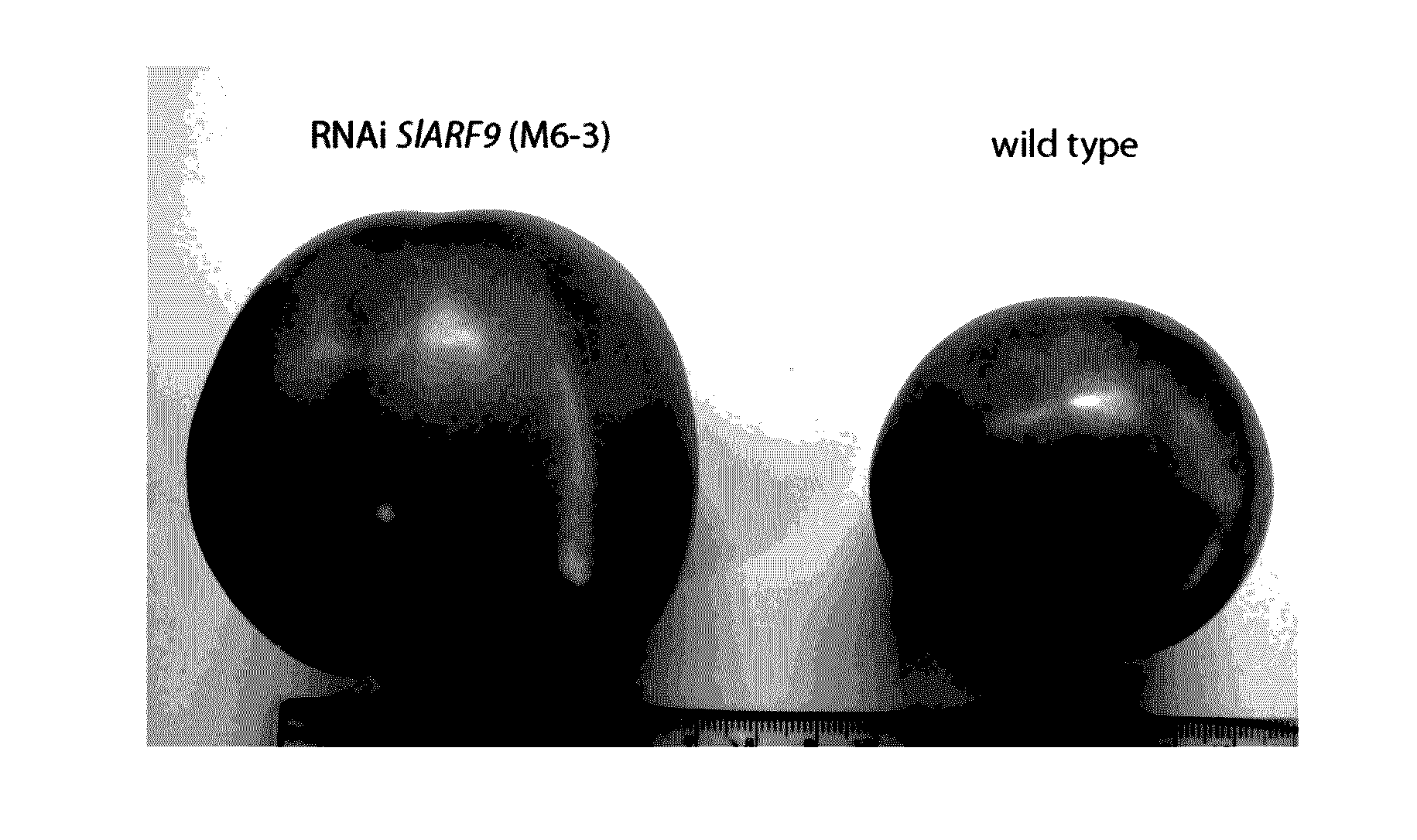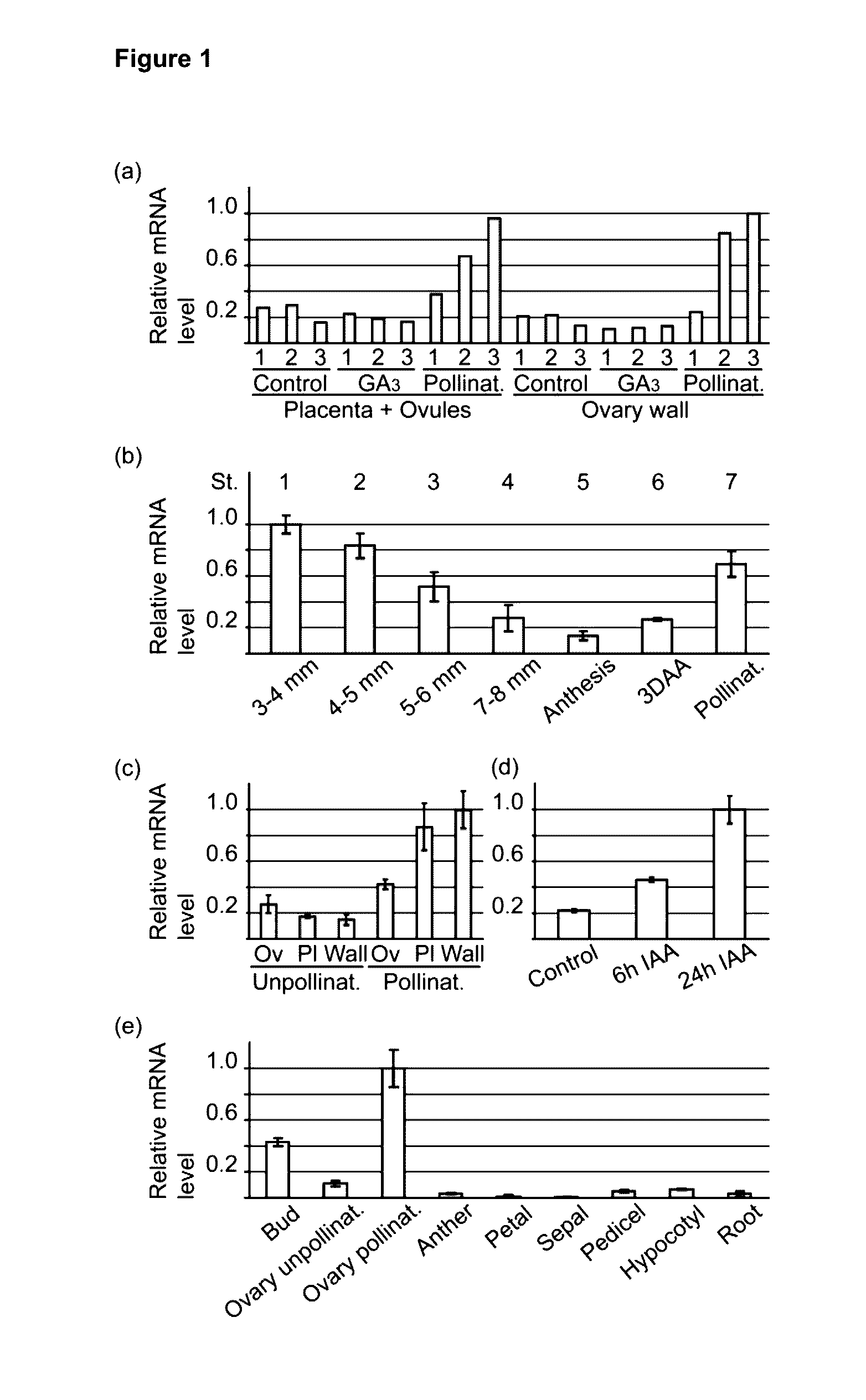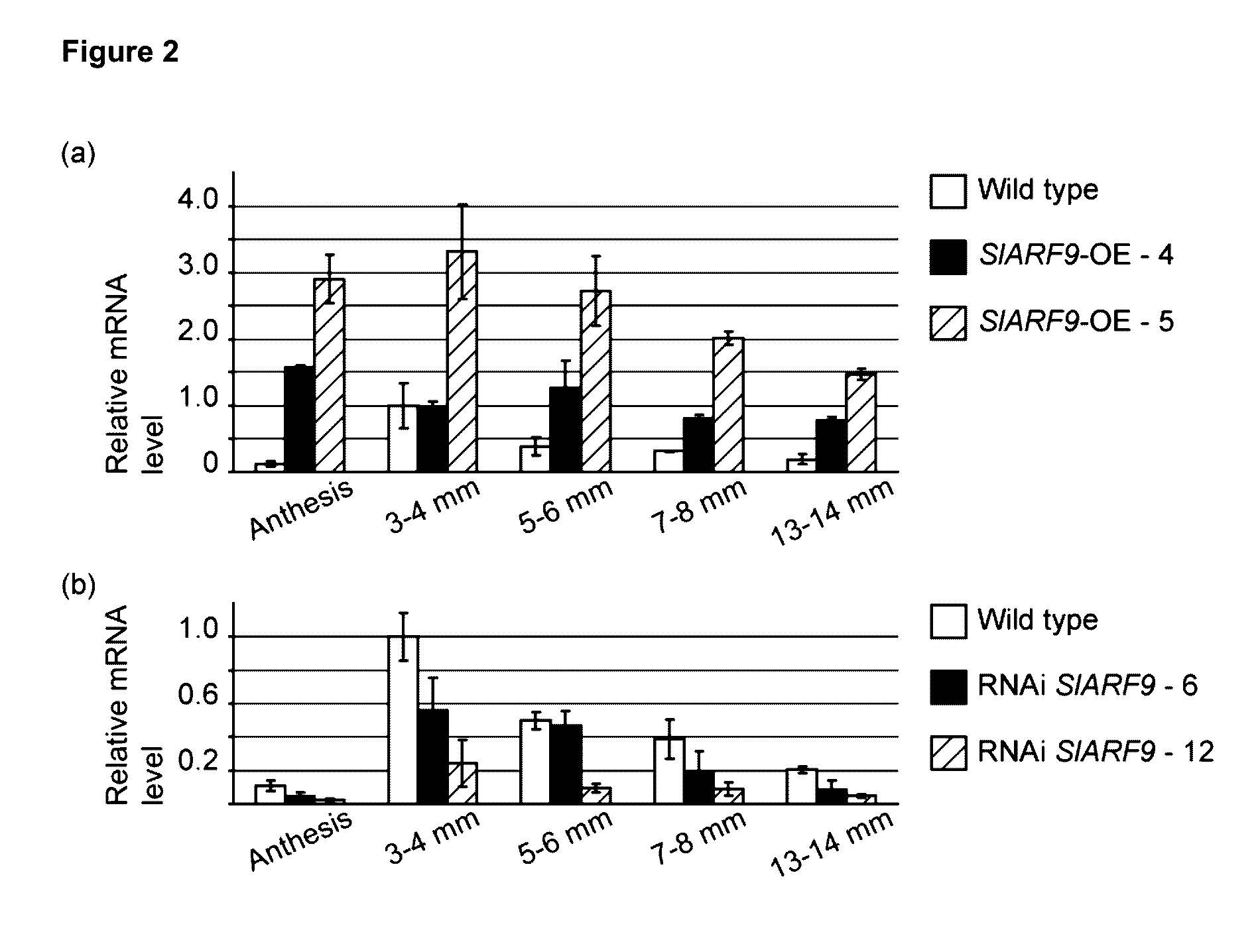Plants with increased fruit size
a plant and fruit technology, applied in the field of plant biotechnology and plant breeding, can solve the problems of complex regulatory network that is controlled by these hormones, uncomplicated requirements for growth and maintenance, and relatively short life cycl
- Summary
- Abstract
- Description
- Claims
- Application Information
AI Technical Summary
Benefits of technology
Problems solved by technology
Method used
Image
Examples
example 1
Isolation and Characterization of SlARF9
[0243]1.1 Materials and Methods
[0244]1.1.1 Plant Materials and Growth Conditions
[0245]The tomato plants (Solanum lycopersicum cv. Moneymaker) were grown as described in de Jong et al. (2009, The Plant Journal 57, 160-170). Also the in vitro culture was performed following the protocol in de Jong et al. (2009, supra). For expression analysis of SlARF9 in ovaries, flowers were emasculated 3 days (d) before anthesis. Hand pollination or hormone treatments were carried out at the stage of anthesis. SlARF9 expression under the influence of auxin was analysed in ovaries of flowers treated with 2 μl of 1 mM 4-Cl-IAA (Sigma-Aldrich, http: / / www.sigmaaldrich.com) in 2% ethanol. The treatment was repeated 6 h after the first application. Control flowers were collected at the stage of anthesis.
[0246]For analysis of SlARF9 expression in the transgenic lines, pericarp tissue was collected from ovaries and fruit that were formed by the second generation (T2)...
example 2
SlARF9 Promoter Analysis in Arabidopsis
[0297]2.1 Material and Methods
[0298]2.1.1 Plant Materials and Growth Conditions
[0299]The Arabidopsis thaliana transgenic plants in Col-0 background were grown under standardized greenhouse conditions, with a temperature of 22° C. and a 16 h light / 8 h dark cycle. Seeds that resulted from floral dip transformation were sterilized by treatment with 100% ethanol for 1 min and with a 2% hypochloride solution for 10 min. After rinsing three times with sterile distilled water, seeds were sown on ½ Murashige and Skoog (MS) culture medium, including Gamborg B5 vitamins, 0.05% (w / v) MES, 0.7% (w / v) phytoagar and 30 mg L-l kanamycin, pH 5.7. After 10 d incubation in a growth chamber (16 light / 8 h dark, 22° C.), resistant plants were transferred to soil.
[0300]Tomato plants (Solanum lycopersicum cv. Moneymaker) were grown as previously described in de Jong et al. (2009, supra). To analyse the expression of the auxin response genes, ovaries of emasculated f...
example 3
Slarf9 TILLING Mutants
[0323]3.1 Tomato TILLING Population
[0324]A highly homozygous inbred line used in commercial processing tomato breeding was used for mutagenesis treatment with the following protocol. After seed germination on damp Whatman® paper for 24 h, ˜20,000 seeds, divided in 8 batches of 2500 respectively, were soaked in 100 ml of ultra pure water and ethyl methanesulfonate (EMS) at a concentration of 1% in conical flasks. The flasks were gently shaken for 16 h at room temperature. Finally, EMS was rinsed out under flowing water. Following EMS treatment, seeds were directly sown in the greenhouse. Out of the 60% of the seeds that germinated, 10600 plantlets were transplanted in the field. From the 8810 M1 lines that gave fruits, two fruits per plant were harvested. DNA was isolated from seeds coming from the first fruit, constituting the M2 population DNA stock. These were selfed and M3 seeds were isolated from the fruits and the seeds were used for DNA isolation and cons...
PUM
| Property | Measurement | Unit |
|---|---|---|
| temperature | aaaaa | aaaaa |
| temperature | aaaaa | aaaaa |
| temperature | aaaaa | aaaaa |
Abstract
Description
Claims
Application Information
 Login to View More
Login to View More - R&D
- Intellectual Property
- Life Sciences
- Materials
- Tech Scout
- Unparalleled Data Quality
- Higher Quality Content
- 60% Fewer Hallucinations
Browse by: Latest US Patents, China's latest patents, Technical Efficacy Thesaurus, Application Domain, Technology Topic, Popular Technical Reports.
© 2025 PatSnap. All rights reserved.Legal|Privacy policy|Modern Slavery Act Transparency Statement|Sitemap|About US| Contact US: help@patsnap.com



